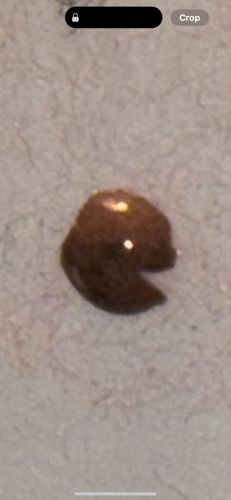It is difficult to determine the exact common name from this image alone, but it strongly resembles a slug or snail without its shell.
Scientific Name: Without more identifying features, a precise scientific name cannot be given. If it is a slug it would fall under the informal group Stylommatophora which encompasses most land slugs and snails.
Order & Family: Stylommatophora (Order, informal group for most land snails and slugs) and various families depending on species.
Size: Typically from 1 cm to 15 cm, depending on the species.

Natural Habitat
Moist, shaded environments such as gardens, under logs, leaf litter, and damp soil. They are often found in areas with decaying organic matter.
Diet & Feeding
Herbivorous or omnivorous; they primarily feed on decaying plant material, fungi, and young plant shoots. Some species may also consume small insects or earthworms.
Behavior Patterns
Nocturnal, active at night or during damp conditions to avoid desiccation. They produce a trail of mucus (slime) to aid in locomotion and as a defense mechanism. They are hermaphroditic, having both male and female reproductive organs.
Risks & Benefits
Potential risks include damage to garden plants and agricultural crops, as they can feed on seedlings and fruits. Some species can also be intermediate hosts for parasites that can affect mammals (e.g., lungworm in rats or even humans). Benefits include their role as decomposers, breaking down organic matter and returning nutrients to the soil.
Identified on: 9/26/2025